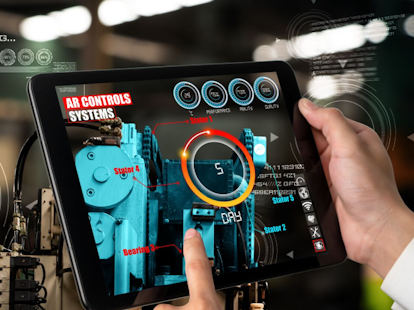The internet of things (IoT) and AI technology now inform every aspect of our daily lives. With the adoption of these technologies by the automotive sector, how can manufacturers ensure their products are safe and comply with relevant regulations?
The driverless car – autonomous vehicle (AV) – is here. In July 2022, Chinese search engine and AI company Baidu announced the introduction of a robotaxi service in 2023 that uses a vehicle, the Apollo RT6, with a detachable steering wheel.1 In the US, Amazon subsidiary Zoot has revealed its robotaxi vehicle meets the highest US safety crash standards and Google’s Waymo plans to offer a driverless ride-hailing service in San Francisco. It is already carrying employees in electric SUVs without human backup drivers.2
Benefits of autonomy
In a previous edition of Consumer Compact, we looked at the ways connected technology is making travel safer by shifting the focus from crash survival to avoidance.3 The makers of the Apollo RT6 state that it will have the driving capability of a person who has been driving for 20 years.4 However, unlike a human, this ability to leverage experience will not diminish with tiredness or distraction.5
AV technology also offers the possibility of cost reductions for consumers. One study suggests insurance premiums could be reduced by up to 50%.6 In part this is a result of fewer accidents and, taken in combination with fewer accidents, could lead to overall savings of USD 1 trillion.7 Some commentators are now predicting that with growth in robotaxis expected to hit 6,300% between 2030 and 2040, this new technology will soon be the cheapest way to travel, with costs as low as USD 0.25 per mile, compared to USD 3.50 for a traditional US taxi.8
Another benefit is greater resource efficiency. Elon Musk, when announcing Tesla’s self-driving robotaxi, stated the typical passenger car is only utilized for 12 hours per week. The rest of the time it is idle, parked. One of the advantages of an AV for consumers is that it could be used between 50 and 60 hours a week. Families would need fewer vehicles as one car might be enough for all car journeys. In the case of the robotaxi, the reduced cost of travel would make this option preferable for consumers, thereby reducing the amount of time vehicles sit idle.9
AVs also reduce congestion. The American Society of Civil Engineers estimates people waste 6.5 billion hours a year sitting in traffic but if even as few as 5% of vehicles were autonomous this could be significantly reduced.10
Other benefits include:
- Reduced CO2 emissions
- Lower fuel consumption
- Travel time reductions
- Lower transportation costs
- More efficient use of parking11
Currently, these benefits are theoretical but with many companies and countries now moving ahead with the introduction of robotaxis, it won’t be long before we all begin to see the advantages of AV.
Challenge for industry
How do you create a vehicle that functions well, meets statutory regulations regarding safety and performance, and which customers want?
It is noticeable that the companies at the forefront of this technological shift are not traditional players in the automotive sector. Instead, they are technology companies with experience in capturing and harnessing data. However, they do not have a history of designing and manufacturing vehicles. Equally, traditional vehicle manufacturers often lack the necessary experience in data manipulation to create safe AVs.
The key to success is excellent full-vehicle over-the-air (OTA) antenna performance. Since all AV require 4G/5G mobile communication and V2X (vehicle-to-everything) technologies to enable them to meet their full potential, ensuring the quality of OTA antenna performance is a critical challenge for manufacturers.
Products will only improve and be approved if they are rigorously tested. Consumers and regulators are naturally concerned about travel without a human driver and so it is only through successful trials that this reticence will be broken down. In August 2022, the drive towards AVs took a major step forward when two Chinese cities approved driverless taxi services – the first places in the world to make this decision.12
Full-vehicle OTA testing
In the end, a product is trusted because it is tested. To succeed in this competitive hybrid market, manufacturers must deliver cars that conform to defined standards and which create trust in the mind of the user.
Full-vehicle OTA antenna testing ensures functionality, performance and reliability. Test conditions mimic real usage scenarios with results that closely resemble actual vehicular antenna performance. Testing includes adjustments for both the influence of the vehicle’s body and interference from other in-vehicle electronic devices, ensuring functionality in all situations.
In a dynamic market, where companies are moving out of their traditional sectors, high quality testing by experts who understand the field and industry standards is the best way to ensure consumers trust and adopt this new technology.
SGS solution
SGS provides solutions to help manufacturers succeed in the competitive global AV market. We offer OTA full-vehicle antenna testing services with capabilities in the fields of automobiles, electronics, communication and reliability.
Our comprehensive testing services cover electromagnetic compatibility (EMC) for electrical, electronic and electromechanical (EEE) components, covering environmental simulation, functional safety (ISO 26262), battery testing, materials and failures analysis, and tests to ensure compliance with regulatory requirements. Our solutions ensure antenna performance and user experience, helping manufacturers and developers to deliver safe, desirable products that meet consumer demand. In the end, it’s only trusted because it’s tested.
Enjoyed this article?
Find more news and updates in our Consumer Compact newsletter >
Delivered direct to your inbox
Subscribe to Consumer Compact >
Follow us on LinkedIn >
For further information please contact:
Howard Chang
Technical Manager
SGS Connectivty & Products
t: +886 2 2299 3279 ext 1542
Reference
-
China's Baidu unveils 'robotaxi' with detachable steering wheel
-
Amazon’s Zoox Says Its Robotaxi Has Met The Highest Crash Safety Standards & Google’s Waymo to offer driverless ride-hailing service in San Francisco
-
China's Baidu unveils 'robotaxi' with detachable steering wheel
-
Marketplace of change: Automobile insurance in the era of autonomous vehicles
-
Self-Driving Cars Are Really Here, and Just Might Save Your Life
-
Tesla robotaxi will offer services similar to Uber and Airbnb, Elon Musk says
-
Baidu Gets China’s First-Ever Permits to Offer Fully Driverless Taxi Services
Noor Tower (2nd, 6th – 10th & 13th Floor),
110, Bir Uttam C R Dutta Road, 1205,
Dhaka, Bangladesh



